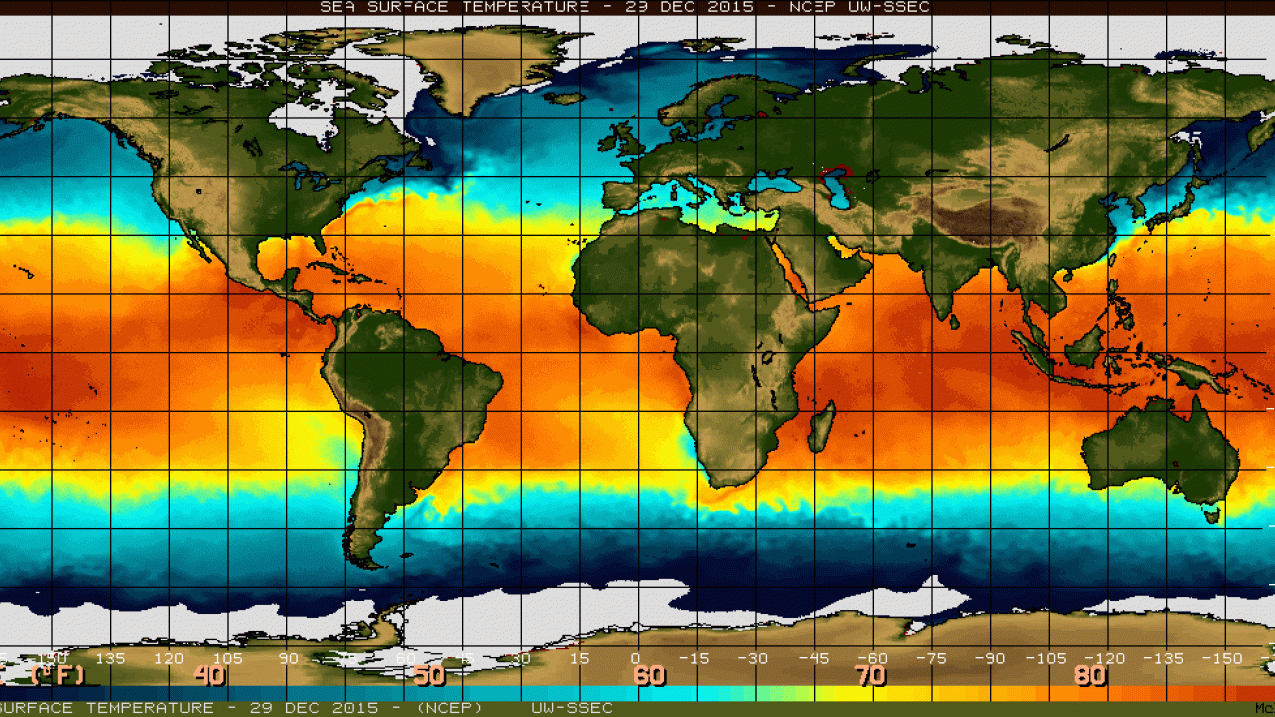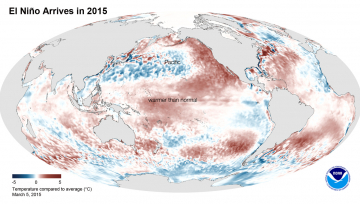Forecasters predict it will stay weak, have little influence on weather and climate
The long-anticipated El Niño has finally arrived, according to forecasters with NOAA’s Climate Prediction Center. In their updated monthly outlook released today, forecasters issued an El Niño Advisory to declare the arrival of the ocean-atmospheric phenomenon marked by warmer-than-average sea surface temperatures in the central Pacific Ocean near the equator.






